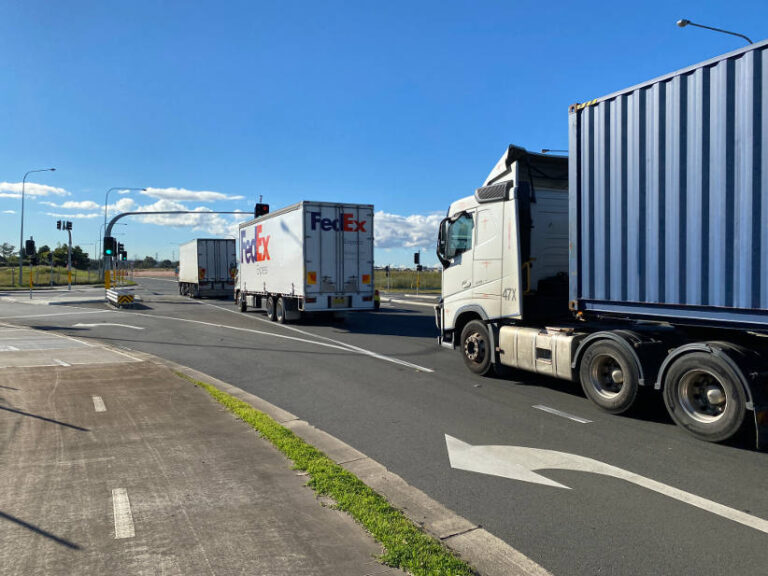A lot of figures about growth in coming years were mentioned — 8.4 percent year on year in road freight in Australia by the end of this year, citing Isuzu; 30 percent growth by 2030, and a 60 percent increase by 2040.
It’s unlikely trucks are going to keep getting bigger to carry increased loads, so it’s going to be a matter of increased truck movements and better use of technology to make those movements more efficient.
Obviously with the event sponsored by a technology group that’s where the discussion was focussed — on how location data services are being deployed increasingly and more specifically to cut waiting times at loading and unloading points, avoid traffic and blockages, reduce idling, and minimise emissions.
“Your customers have this very demanding expectation of knowing that eta (estimated time of arrival) is right,” said Jason Jameson, Senior Vice President and General Manager of Asia-Pacific at Here Technologies. “And we see that there’s really three areas where location technology can help,” he said, adding that comprised planning vehicle dispatch, route planning and post-trip analysis, or looking for ways to further optimise.
HERE Technologies location data and technology platform is used by more than 30 million vehicles and in more than 200 countries and territories. Isuzu Australia is using HERE Technologies navigation systems in its 2022 F Series, FX Series, and FY Series trucks for interactive maps, traffic and routing. HERE also underpins the telematics used by Coca-Cola Europacific Partners, which owns the Australian bottler.
Covid-induced supply constraints, net-zero emission commitments and ethical supply chains were among the global challenges driving leading businesses to increasingly look to technology for solutions, said Rachel Smith, head of government and policy at the Australian Logistics Council, adding, “We know location technology has a role to play in helping companies overcome these business-critical challenges.”
To be sure, the technology can be used to improve a business, said Andrew Littleford, principal supply chain advisory consultant at AWS Professional Services. Littleford said the quality of the data and knowing how to use it were key. “The last few years, the technology has really evolved quite considerably.”
Jameson suggested the next few years were going to see more innovation in the technology to meet demands for corporate and government sustainability targets. “Everyone’s talking net zero etcetera,” and “Having precision around where and when allows companies to be able to determine how intensive the carbon emissions,” he said. “These sorts of practical things where location can be added to get these sustainable outcomes is extremely important.”
—Caroline Falls is a freelance reporter. She has been contributing to Fleet Auto News since 2015. She can be contacted at carolinefalls@gmail.com.






